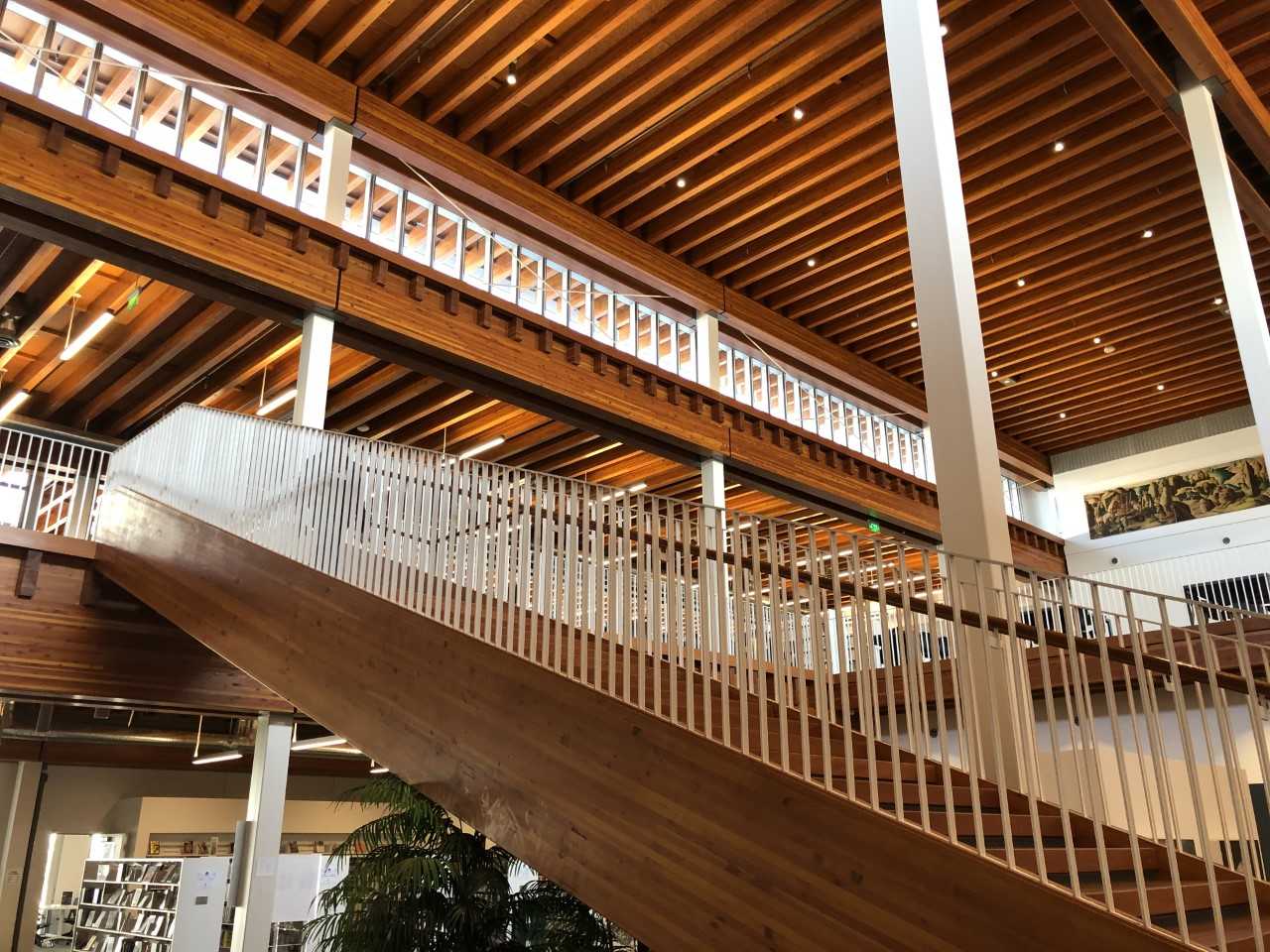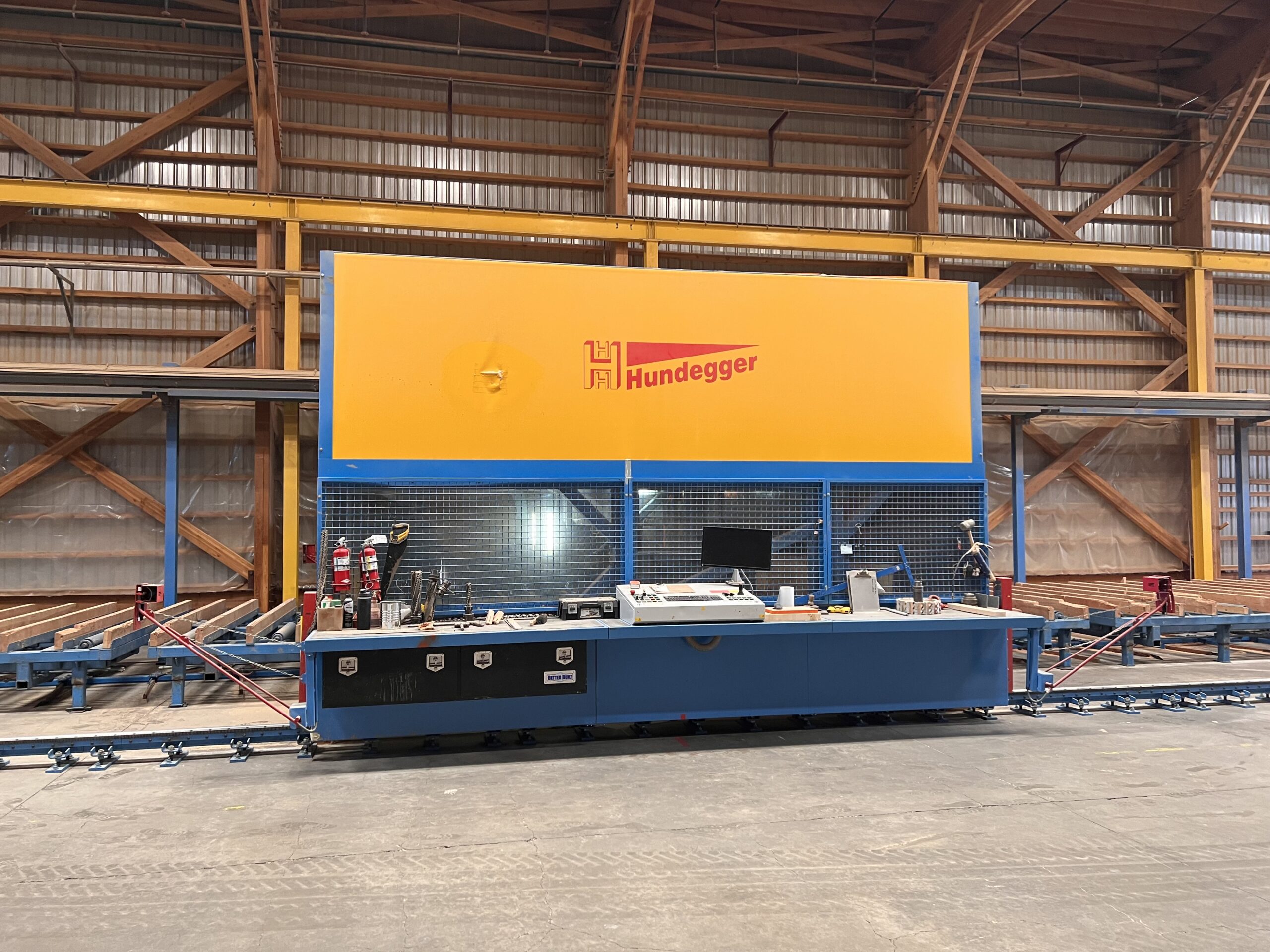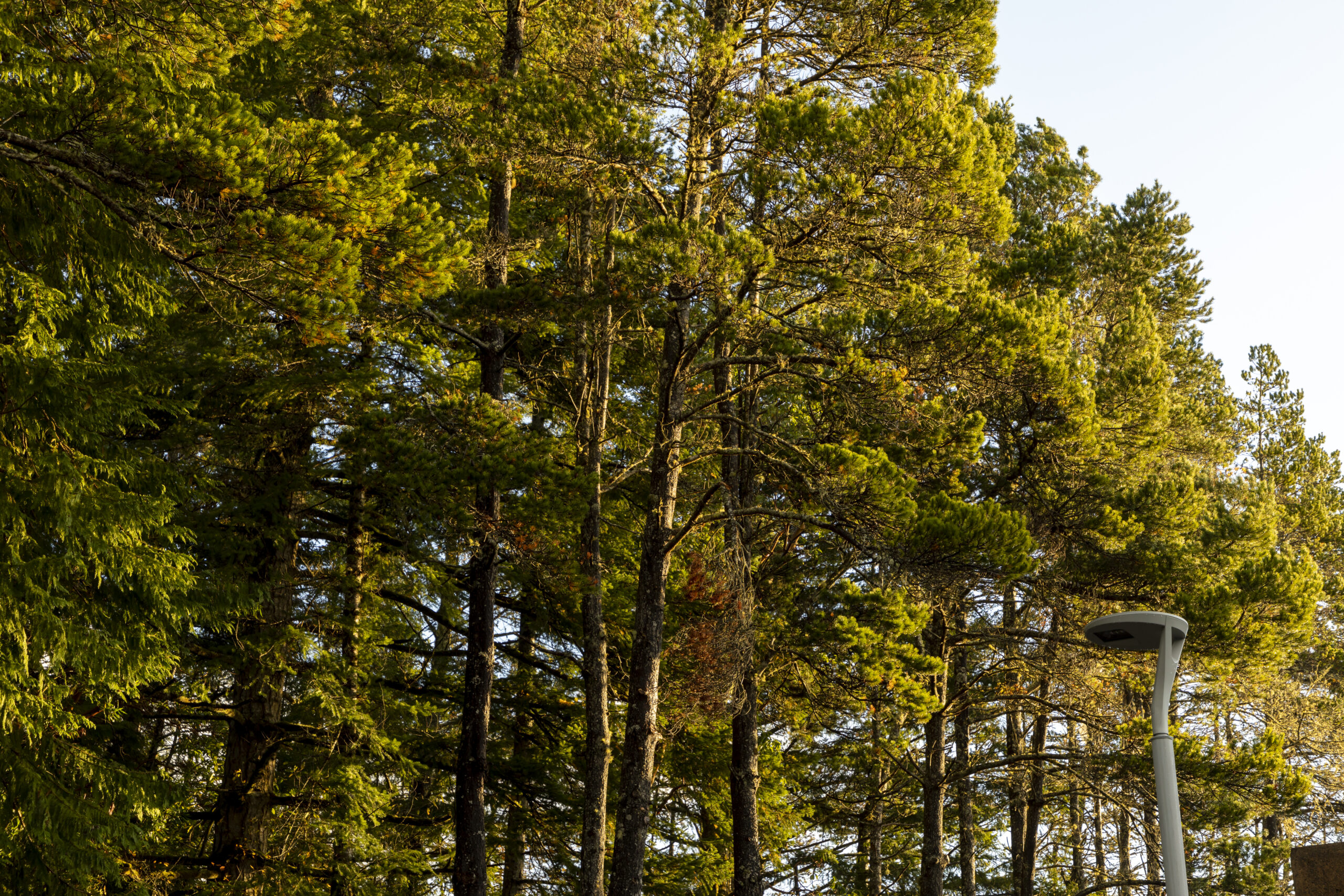The Beauty of Glulam Beams
DR Johnson is known to provide custom, quality, and beautiful glu-laminated beams. Exposed structural glu-laminated timber provides structures with a warmth and beauty that does not compare with other building materials. What is a glulam? Glulam is glued laminated timbers pressed together to create a single structural beam or column. DR Johnson’s glulam’s are made completely custom from locally sourced Douglas Fir. DRJ offers four different appearance grades; industrial, architectural, premium, and framing grades. Because we offer such a wide variety of beam options, we make it easy to place glulam orders with us by email, phone, or the contact form on our website! Our team is dedicated to getting your the products you need, in a timely and efficient manner.
DR Johnson is proud to be a leader in the Mass Timber industry, by providing high quality, beautiful beams for the past 53 years. Quality control is a top priority, and our team here at DR Johnson Wood Innovations is committed to delivering top quality products for all customers. DRJ is a proud member of the Engineered Wood Association, also known as APA. Our glulam beams are certified to carry the APA trademark, which signifies a commitment to rigorous program of quality verification and testing. All beams are tracked closely throughout the plant and is verified for appearance, quality, and strength before it is shipped to any customer. All beams are manufactured to specification, with or without camber. Accurate manufacturing at the plant reduces the need for on-site fabrication, minimizing waste and labor costs at the time of installation.
The beauty of DR Johnson’s glulam beams shines through when showcased as an architectural element. Glulam beams are not only a vital structural element, but when left exposed, brings a sense of warmth to any structure. DRJ glulam’s give a wide range of possibilities, allowing everything from arches to standard beams, to columns for commercial buildings. The natural wood element is not only beautiful, but makes for a more eco-friendly space.
The Four Glulam Appearance Classifications:
Premium Appearance:
The highest appearance classification for use when appearance is the primary design consideration. Specific characteristics of this classification are:
- Laminations shall be selected to minimize loose knots, unsound knots, knotholes, pencil wane, bark inclusions, or voids that will be visible after surfacing of the member.
- Exposed faces shall be surfaced smooth. Misses, wane, and low laminations shall not be permitted.
- The corners of the member exposed to view in the final structure shall be eased with a minimum radius of 1/8inch or equivalent chamfer.
- All occurrences of pencil wane shall be repaired, regardless of length. Pencil wane shall be permitted to be repaired using filler
- Up to a maximum length of 8 inches. For pencil wane longer than 8 inches, wood inserts shall be used for repairs.
- In exposed surfaces, voids measuring over 3/4 inch in length shall be filled with wood-tone colored filler that reasonably blends with the final product or with clear wood inserts selected for similarity to the grain and color of the adjacent wood, Exception: A void (not repaired ) is permitted to be longer than 3/4inch if its area does not exceed 1/2 square inch
- Occasional occurrences of voids due to loose knots, unsound knots, knotholes etc., which were not detected during the lumber grading process, shall be permitted subject to the repair requirements of the preceding paragraph.
- On the wide face of laminations exposed to view in the finished member, knots shall be limited to 20% of the net face width of the lamination, and not over two maximum size knots or their equivalent shall occur in a 6-foot length
- Voids greater than 1/16 inch wide in edge joints appearing on the wide face of laminations exposed to view shall be filled with wood-tone colored filler that reasonably blends with the final product.
Architectural Appearance:
A high quality appearance suitable for applications where appearance is an important but not overriding consideration. Specific characteristics of this classification are:
- In exposed surfaces, all knot holes and voids measuring over 3/4 inch shall be filled with a wood tone filler or clear wood inserts selected for similarity with the grain and color of the adjacent wood.
- The wide face of laminations exposed to view shall be free of loose knots and open knot holes shall be filled.
- Knot holes shall not exceed 3/4 inch when measured in the direction of the lamination length with the exception that a void may be longer than 3/4 inch if its area is not greater than 1/2 square inch.
- Voids greater than 1/16 inch wide created by edge joints appearing on the wide face of lamination exposed to view shall be filled.
Industrial Appearance:
The minimal appearance classifications normally suitable for use in industrial plants, warehouses and other similar structures and for concealed applications where the appearance is not the primary concern. Specific characteristics of this grade are:
- Voids appearing on the edges of laminations need not to be filled.
- Loose knots and knot holes appearing on the wide face of the laminations exposed to view shall be filled.
- Members are required to be surfaced on two sides only and the appearance requirements apply only to these sides.
- Occasional misses, low laminations or wane (limited to a maximum of 1.4 inch measured across the width) are permitted on a cumulative basis, not to exceed 10 percent of the width of the member at any glue line. The frequency of occurrence shall not exceed one in ten pieces of lumber used. The maximum area of low laminations shall not exceed 5 percent of the surface area of a side and no more than two low laminations shall be adjacent to one another. Permissible wane in accordance with the provisions of the layup combination is not limited in length.
Framing Appearance
The Framing appearance classification is a classification introduced by the industry to accommodate home building and other construction markets where glulam is used in combination with dimension lumber in roof, wall, and floor framing. to be compatible with the conventional framing lumber sizes without the need for furring or other specialized framing, glulam is supplied in 3-1/2, 5-1/2, and 7-1/4-inch widths. Surface characteristics of glulam members finished to this classification include:
- Manufacturing characteristics including low laminations, end joint offsets and glue line squeeze out are permitted.
- Lumber characteristics permitted for the given layup combination may include knot holes, splits and wane.
- Voids appearing on the edge of laminations need not be filled.
- Loose knots and knot holes appearing on the wide face of laminations exposed to view need not be filled.
- Members are required to be surfaced “hit or miss” on two sides only and the appearance requirements apply only to these sides.
- The accumulative depth of hit and miss and wane shall not exceed 15 percent of the width of the member in any glueline. The maximum area of low laminations or wane occurrence shall not exceed 25 percent of the surface area of a side. Permissible wane in accordance with the provisions of the layup combinations is not kited in length.




